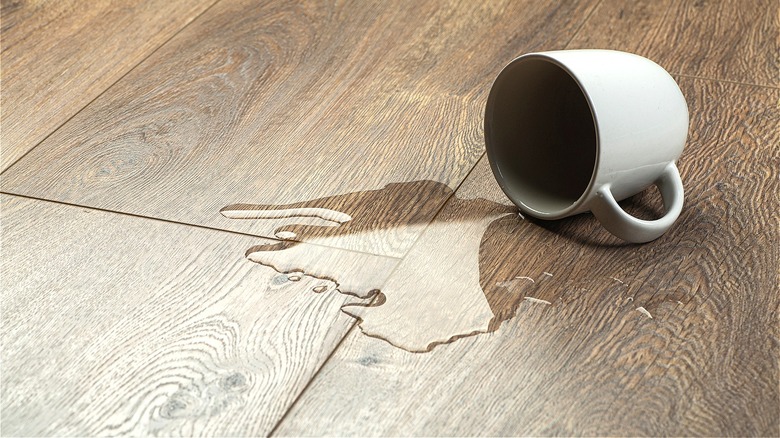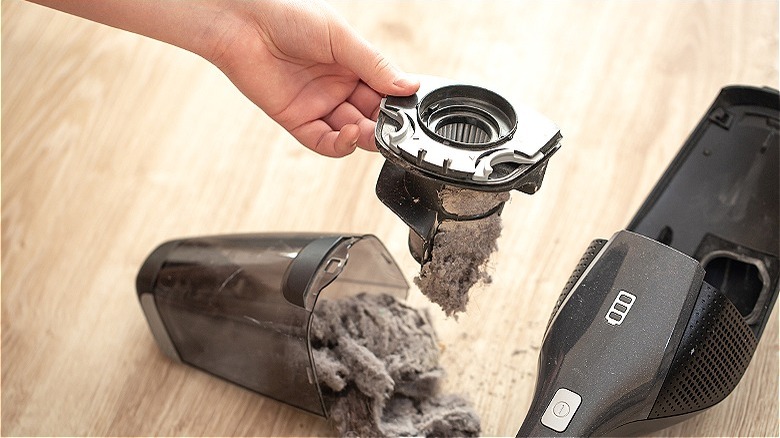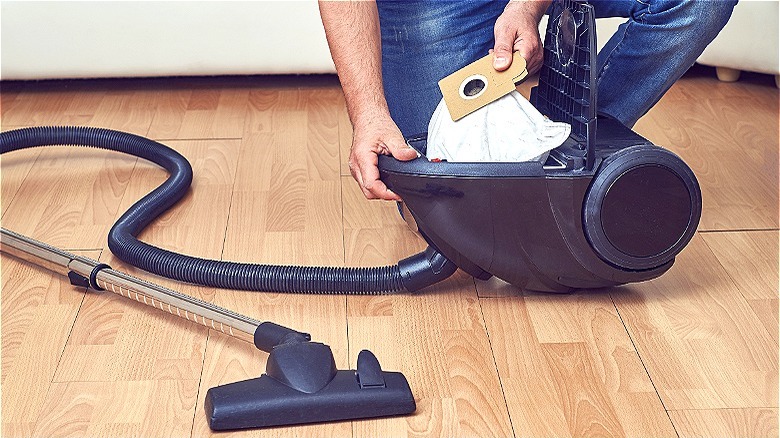What Happens When You Use A Vacuum To Clean Up Water Spills
When vacuuming your house, it may be tempting to pick up droplets of water or small spills in your kitchen with your vacuum, too, but this will likely lead to a larger cleanup than simply wiping up the liquid with a paper towel. Even if you've accidentally sucked up only a little water while vacuuming near your pet's bowl, say, it could cause problems for the machine. While some vacuums, like shop vacs, are designed to handle liquids, most vacuum cleaners are only made to deal with dust and dirt.
Smaller quantities of water probably won't destroy your vacuum cleaner, but that doesn't mean it's a good idea to suck up moisture if it can be avoided. If a few drops of water end up in your vacuum, it can mix with the dirt inside the chamber or bag, making a muddy mess. Spills or larger volumes of water, meanwhile, have the potential for much greater problems.
What will happen to a vacuum that's sucked up water
Liquid that's gotten inside a vacuum will create mud, and depending on how much water you're dealing with, the dirty paste may cause clogs inside your machine. While mud won't always plug up your vacuum, it'll impede its suction capabilities, rendering it less efficient. If water reaches the motor, it's best to buy a new vacuum altogether; it's not safe to use a vacuum with a water-damaged motor, and it could even shock you if you try to clean with it.
If you've mistaken your vacuum for a wet/dry version, sucking up large amounts of water from a flood or leak in your home will make an enormous mess. Since regular vacuum cleaners aren't designed for liquid, the dirty water will seep out of the machine and end up back on your floor. While tiny amounts of water may not permanently damage your vacuum, bigger quantities will likely be the death of your machine.
What to do if there's water in your vacuum
As soon as you notice you've vacuumed over a wet area, turn off and unplug the machine. This will prevent the liquid from spreading to other parts of your vacuum, such as the motor, and keep you safe from potentially being electrocuted. If your vacuum has a bag, you'll need to remove it and replace it with a new one, but if your model has a chamber you'll need to dry it out. Start by emptying the dustbin and then leave it open and set it out to air dry.
If your vacuum has a washable filter, you'll be able to clean it and let it air dry, but if it can't be washed, you'll probably need to get a new one. Once all the parts of your vacuum have thoroughly dried, you can put it back together and clean with it again. Remember, if you want to vacuum up water with your vacuum cleaner, you'll need to invest in a shop vac (aka a wet dry vac).



